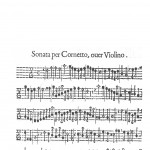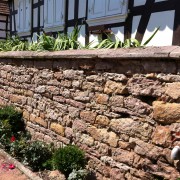You who Dwell in the Gardens
Listen to this piece http://soundclick.com/share.cfm?id=4778612, while you read about it:
Eyal speaks:
“You who Dwell in the Gardens” is a piece of spiritual longing.
My encounter with Drora Bruck inspired me to cast this longing into composing for an instrument that until then was a mystery to me – the recorder. Drora’s playing which has both a lot of conviction and a lot of love, significantly influenced the formation of the backdrop for the composition of the piece.
During our encounters Drora performed for me on all types of recorders and played CDs with a rich selection of recorder repertoire from the Middle Ages to this day. Slowly I became aware of the fact that I have been offered a gateway into a rich and fascinating world with roots going back as far as ancient days of magic spells and witch-craft.
It was only natural that Drora’s intimate and introverted
playing, along with the subtle spark of her virtuosity found a path into my heart when I came to express in music the lover’s longing words to the mystical beloved lady of the Song of Songs.
For the musical language I chose the model of a single movement romantic piece written in free style and making use of transparent textures. I would like to note two musical influences that made essential contribution to the timbre of this piece: The first is Celtic music, where the recorder plays a significant and highly respected role. The freedom and large expanses of the piece are influenced by this direction. The second influence is east-European cantor music. Something in the longing and melancholy of that music found its way into this piece. I hope you will like it.
Drora speaks:
On the birth of the piece:
I first met Eyal Bat more than ten years ago. I attended the birthday of a friend, the clarinet player Noga Ben Azar, along with many other musicians, who did what musician usually do at parties – played music. At the piano sat a guy who played Beatles songs. He started playing “The Fool on the Hill” and when he asked: “Does anyone here have a recorder?” someone found for me a faded red plastic reorder with an old sound. After that song we continued with other Beatles songs.
I have heard of Eyal before, but it was only after we were done playing that we introduced ourselves, and from that moment on it was clear to us that we should make music together. The next meeting took place at my place in Tel Aviv, and we came up with the idea of selecting verses from the Song of Songs and composing music inspired by those verses. Then we sat down, with a Bible for each, and having selected verses we particularly liked, we were surprised to discover that we both selected “You who dwell in the gardens, companions are listening to your voice, let me hear it.” from ch. 8.
When Eyal invited me over after awhile to hear the first drafts I was delighted. Every time anew where a piece is created that I am part of, when something of me influenced its inception, I get excited like a little girl, perhaps because as a performing musician, the thing I create disappears almost an instant after it happens, and a piece written for me, inspired by me, is my only way to go on being after I have finished playing, and to be in it even before I started.
When I first heard “You who Dwell in the Gardens” – I fell in love. I was not yet sure then with what, I only felt the melody wrapping itself into my heart and caressing my soul. The premiere was https://www.acheterviagrafr24.com/viagra-pas-cher-chine/ performed in a memorial recital held in memory of the pianist Sara Fuxon-Heiman, who dedicated most of her working life to Israeli Music. On that evening, on October 1999 in Einav Center on the roof of Gan-Ha-Ir, Tel Aviv, Eyal himself accompanied my on the piano.
Over the decade that has passed since I performed the pieces in concerts, recorded it, and taught students who studied it. I freed that it grew next to me and flourished inside me, and I grew with it. Its complexity is intertwined with the fiber of my being and I grow with it and alongside it, and perhaps only now I truly understand it.
A few points to consider before performing it: For me this piece represents a process of self growth, a passage between different periods within the circle of life, while taking a journey of self discovery. With the opening D on the piano the player should illustrate the development that takes place throughout the piece. That is why it is important to know the entire piece and take it in before any decisions are made about any interpretation. The Phrygian mode and melody’s flexibility set the general mood for the piece and one should let the players’ intuitions lead them into a deeper understanding of the piece, not unlike the kind of understanding and acceptance that comes from a long running acquaintance of a close friend. The melody that appears in the first measures in the piano part, played by the right hand, then passes to the left hand, and now it is already familiar to us, and just as one can’t cross the same river twice, here in
this second encounter, the melody takes on a new meaning: its texture is expanded by the number of notes sounding the melody, and furthermore our feeling changes by virtue of our earlier acquaintance. When the recorder enters it allows itself to ornament and celebrate around the melody, like a young girl celebrating the spring of her youth. When she is done ( C ), the piano takes her in, back into the somewhat mundane reality she’s trying to escape, takes her back to where she is supposed to be, to the serenity of the old and familiar, but she ( D ) colors reality with the rejoicing of youth. Her awareness is heightened, however she is still herself, still with the full intensity of her emotions. With maturity ( E ), comes a more sober outlook, and with them come peace and quiet and parting, with consent, from the previous movement.
Now something happens, with another sound, a different timbre, a different tension, until the renewed encounter with ourselves, with our first melody and with the old-new reality. In this reality we are something of strangers within our own bodies and withing the labyrinth of our souls. From this storm we return to the same ornaments, the same uniqueness, the same attempts to find ourselves anew until we find some consensus – both with ourselves and with http://www.cialispharmaciefr24.com/tadalafil-avis/ reality.
This is of course the personal way I experience this piece, and obviously the interpretation is different for each performer, however, the qualities of “You who Dwell in the Gardens” and its beauty stem, in my opinion, from its affinity to some cosmic inner truth, the kind that each and every one of us can find themselves in after an exploration process – like every good piece of art.
Hoping that you will never stop to seek out and explore,
that you will transform the exploration outside yourselves to an exploration within, and during the journey you will discover the unexpected beauty, the one that one cannot prepare to, that which is deep inside you and let yourselves be a little surprised.
Listen to the performance of this piece by myself on the recorder, and piano player Marina Minkin, recorded live in 2006, in the Jerusalem Theatre.
\”Hayoshevet Baganim\” by Eyal Bat
This article was kindly translated into English by Uri Bruck.



 George Philip Telemann is well known to recorder players, as he added so much wonderful music to their repertoire. Some claim that his music is simple, yet it is important to realize that having composed so much, some of his music was intended to be performed by amateurs, while other pieces are compositional masterpieces.
George Philip Telemann is well known to recorder players, as he added so much wonderful music to their repertoire. Some claim that his music is simple, yet it is important to realize that having composed so much, some of his music was intended to be performed by amateurs, while other pieces are compositional masterpieces.




